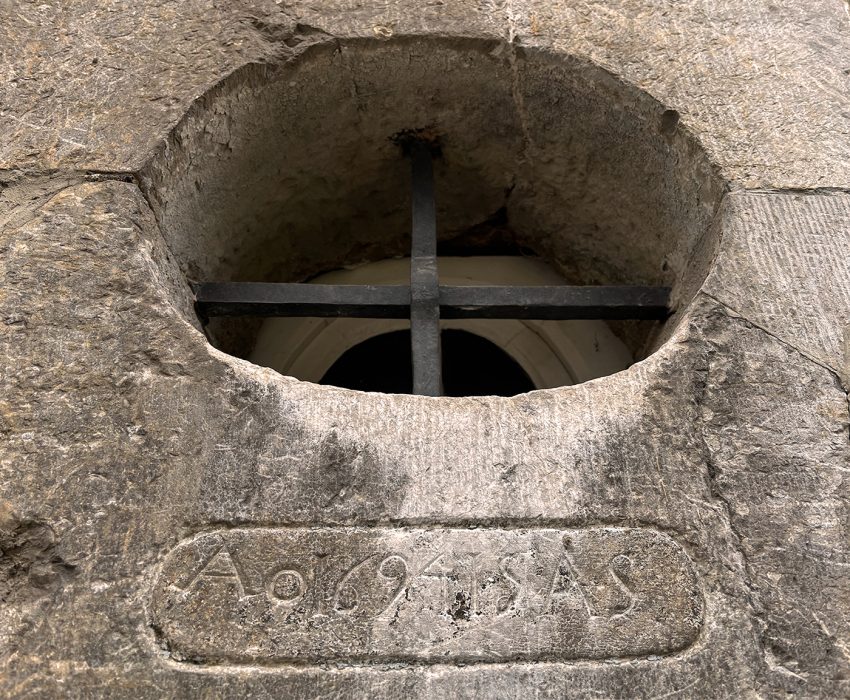
Harry Koll and Sabine Steinbock
The exhibition Form – Fläche – Struktur (Form – Surface – Structure) by German couple Harry Koll and Sabine Steinbock in Töpfereimuseum Langerwehe from 3 March to 12 May 2024.
. . . . . . . . .
Form – Surface – Structure
Harry Koll and Sabine Steinbock have two passions in life: traditional Anatolian kilims and contemporary Japanese-inspired ceramics. On the surface, a rather curious combination, but on closer inspection it is easy to see why. Both disciplines carry cultural significance and involve sublimely crafted artisanal objects for both utility and sensory appreciation, including rich textures, subtle combinations of colour and tonality, a certain gravitas and intricacies that invite contemplation and reflection.
Given these qualities, it is hardly surprising to see the return of these two dedicated ceramic artists to Töpfereimuseum Langerwehe for a new exhibition of their work. Their previous exhibition here was held just over four years ago and given its enthusiastic reception and universal commendations it is little wonder they have been invited to return to show off their recent work and provide anyone unfortunate enough to have missed their earlier exhibitions with a fresh opportunity.
The small town of Langerwehe lies midway between Aachen and Cologne. It was once a major centre for Rhineland pottery and is famous for its tall storage containers, known locally as baaren. Excavations have unearthed kilns dating back as far as the 12th century. As the name suggests, the Töpfereimuseum houses a pottery museum, but also a generous exhibition space, an auditorium and a workshop with a resident potter.
Koll and Steinbock have an intimate knowledge of the various techniques of their chosen aesthetic and have spent decades experimenting extensively with hand-formed chawan teabowls, mizusashi water containers, tsubo storage jars, tokkuri sake bottles, incised slab compositions and other quintessentially Japanese forms. Ultimately, however, visual interest takes precedence over idiom and it is this that has led them to develop their own unique voice in their work, especially with their perfected use of fluting and patterned notching (Kerbschnitt in German), a technique they first explored when they started out in the mid 1970s. Given a choice, they prefer to leave these pieces unglazed, as this allows a full appreciation of the rich tonality of the clay and firing technique and encourages the interaction of light and shadow.
The specific firing method they employ depends on the type of ware and the effect they aim to achieve. They built their own single-chamber anagama kiln for their impressive long-fired stoneware that could benefit most from the intensity and drama of this process. Their raku ware, on the other hand, is flash-fired in a conventional wood kiln. The iron-rich clay is given a transparent glaze to encourage the depth of warm natural tones and the reductive atmosphere that deprives the work of oxygen emphasises this effect. Additional impact is then achieved through the post-firing smoking process. In recent years they have also experimented with charcoal firing. The more controlled environment of saggar-firing takes place in a gas kiln. Calcium-rich shells or pine cones are occasionally used, leaving almost ghostly impressions, and straw, hay, wood shavings and other combustible materials are then added to create the desired effect.
There is always a sense of balance and calm undulating movement in their work. Familiarity with texture and form is combined with subtle surprises that succeed in drawing the inquisitive viewer in to become absorbed in the flow of pensive engagement. Theatrical surfaces and heavy deposits of natural fly ash are not their primary area of interest. Their tastes are more understated and perceptive, yet free from any ideological intentions. In many ways, their pieces are as much for contemplation as they are for conversation. Their grooved patterned surfaces, for example, are orchestrated with precision and forethought. They mirror the ribbing of wet sand on a beach or the rippled-water effects of raked-gravel Zen gardens, forming miniature stylised landscapes of natural flow and motion. A number of these pieces are enhanced by a gentle frosting of shino glaze to convey a more wintry topography of light and shade, without blemishing their underlying composure. And the curvature and oscillating rhythms created by the raised ridges and carved furrows of their miscellaneous fluted forms all go to reflect the importance of the physical environment and seasonality in Japanese artistic expression, but also the sense of simplicity, solemnity and sincerity at its core.
The exhibition Form – Fläche – Struktur (Form – Surface – Structure) by Harry Koll and Sabine Steinbock in Töpfereimuseum Langerwehe opens on 3 March 2024 at 11.00 and runs until 12 May 2024.
Neale Williams
[This exhibition preview was first published in issue 2/24 of the international ceramics magazine Neue Keramik/New Ceramics.]
. . . . . . . . .
Töpfereimuseum Langerwehe
Pastoratsweg 1
52379 Langerwehe
museumsverein@toepfereimuseum.de
www.toepfereimuseum.de